The use of open-source software has become more widely accepted in today's business world. This is, in large part, because of the increased popularity and reliability of products like Linux-based operating systems and Apache and Tomcat Web servers. The smaller cost (i.e., free) of acquiring open-source software is another reason this is an attractive option. And because open-source software means that the source code itself is freely available, you have the option of modifying the software to meet your specific needs. But operating systems and Web servers aren't the only open-source products out there. With the onset of regulatory initiatives like Sarbanes-Oxley, change management has become a necessary component of any IT organization. In this article, we'll explore using open-source technologies for handling your change management system needs.
Exploring Change Management Systems
According to the Information Technology Infrastructure Library, the goal of the change management process is to ensure that standardized methods and procedures are used for efficient and prompt handling of all changes in order to minimize the impact of change-related incidents upon service quality and to consequently improve the day-to-day operations of the organization. Change management systems help facilitate this goal. The general purpose goal of any change management system is to reduce the impact of a proposed change on your production systems or applications. Exactly how this is accomplished can vary greatly from one change management methodology to another. A change management system can be as simple as a means for tracking changes from initial request through approval to production. More robust change management systems allow for full control over separation of duties to ensure that the person who develops a change cannot move that change into a production environment. No matter which level of change management system you require, there are many open-source options to meet your needs.
Straight from the (Open) Source
Often, the most difficult part of locating the right open-source solution can be knowing exactly where to look for that solution. The premier location on the Internet for locating open-source application projects is SourceForge.net. At the time of this writing, SourceForge.net lists 137,384 active projects. One of the premier open-source software change management applications is the Subversion project. This project was originally developed as a replacement for another popular open-source change management application known as Concurrent Versions System (CVS), which is a means by which multiple developers can work on a single project. In the open-source world, this is a "must have" tool because of the number of developers lending their time and abilities to a project.
Like much of the open-source software available, both of these applications were initially developed primarily for use on the Linux operating system. However, a port of Subversion has been released for OS/400 and i5/OS. This port, developed and supported by SoftLanding Systems, gives iSeries users a way to achieve version control on the iSeries itself over Java and Web development objects. Subversion/400 can be used with WebSphere Development Studio Client (WDSC) and can be integrated with Eclipse using the open-source Subclipse add-in. SoftLanding Systems also released an open-source version of its popular iSeries-based commercial change management package, TurnOver. TurnOverSVN gives iSeries developers source version control capabilities over Java-, PC-, and Web-based development projects. Through this integration into the TurnOver change management product, iSeries developers can now use a single application to handle change management for their legacy (RPG, ILE, etc.) applications along with their Java and Web applications.
One of the main purposes for using a system like Subversion is to provide a means by which to deal with multiple developers working on the same source at the same time. This is handled by storing the source in a central repository. Without a system to keep track of multiple versions of the same source, there's no way to keep all versions of the same source in sync. This means that if two developers are working with the same version of the same source, the second developer's changes will overwrite the first developer's changes when the two versions are moved back to the repository. Subversion handles the version control through what is known as the copy-modify-merge method. This method involves copying the source from its original location in the repository to a working copy stored on a local computer. Each developer has his own working copy. When the first developer saves changes, that copy is moved back into the repository. When another developer attempts to save changes to the repository, he will be notified his working copy is out-of-date. That developer can then request that his changes be merged into the new version in the repository. Assuming that there are no overlapping changes between the two versions, the changes are merged and this new version is saved back to the repository. This example is illustrated in Figures 1 through 4.
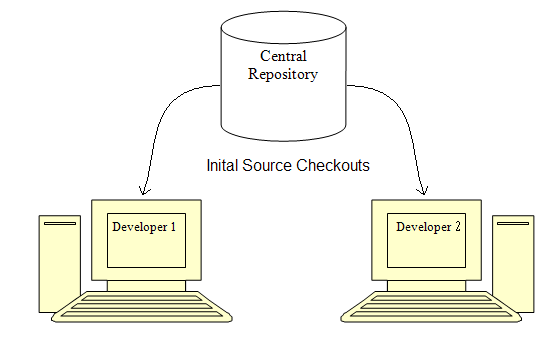
Figure 1: Initial source is checked out from the repository by both developers. (Click images to enlarge.)
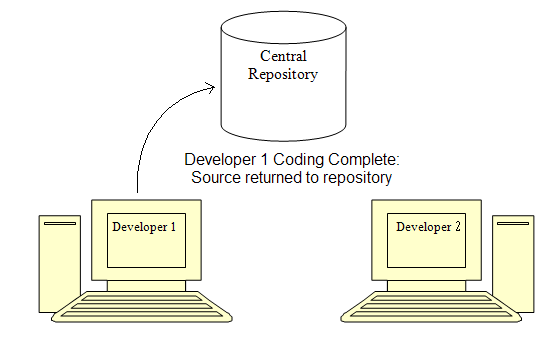
Figure 2: Developer 1 completes coding and returns his version to the repository.
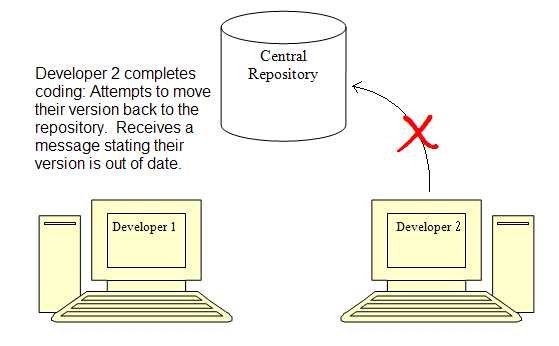
Figure 3: Developer 2 attempts to returns his version, but is informed that his copy is out-of-date.
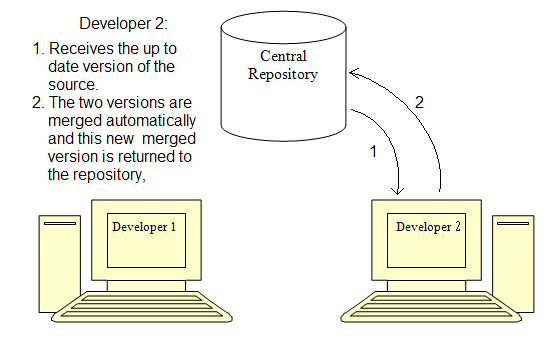
Figure 4: Developer 2 receives the updated version, merges changes, and returns the merged version.
These diagrams illustrate what is a fairly clean method of handling this process. If, however, there are overlapping changes, the merge process will need to be performed manually prior to saving the file to the repository. Subversion acts as a server component, which can be accessed from a variety of clients, including TurnOverSVN. The basic Subversion client is a command-line client called "svn." The additional components are listed in the table below.
| Subversion Modules | |
| Module | Description |
| svn | The command-line client program |
| svnversion | A program for reporting the revisions of a working copy |
| svnlook | A program for inspecting a Subversion repository |
| svnadmin | A program to administer a Subversion repository |
| svndumpfilter | A program to filter Subversion repository dump streams |
| mod_dav_svn | An Apache plug-in that allows a Subversion repository to be shared with others |
The Subversion command-line utility (svn) supports a series of subcommands to perform tasks on objects within a repository. The svn checkout command is used to check out a working copy from a repository. A sample is shown below:
This example performs a checkout from an HTTP-enabled repository to a folder named localfolder.
The svn commit command is used to commit changes made in a working copy back into the repository. A sample is indicated below:
This example commits changes from the working copy along with a log message indicating the reason for the commit.
For a complete list of svn subcommand syntax, see the free Version Control with Subversion PDF.
The svnadmin utility is used to administer Subversion. As with the svn utility, svnadmin supports a series of subcommands to perform tasks. The svnadmin create command is used to build a new repository. An example is shown below:
Again, a complete reference for the svnadmin subcommands can be found in the Version Control with Subversion manual.
While these command line interfaces will get the job done, they're obviously not the most user-friendly option for working with Subversion. Luckily, a multitude of GUI-based Subversion clients are available. One of the most popular for the Windows platform is the TortoiseSVN client. This utility is actually a shell extension to Windows Explorer and adds Subversion functionality that is accessible within any Explorer window. Figure 5 shows how this appears in Explorer.
Figure 5: TortoiseSVN integrates into Windows Explorer.
Note that you not only have the ability to perform checkouts directly from within Explorer, but you can also perform svadmin tasks like creating repositories right from within Explorer. The SVN Checkout option displays the Checkout dialog shown in Figure 6.
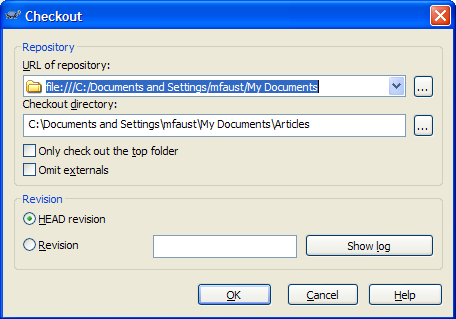
Figure 6: The TortoiseSVN option displays the Checkout dialog.
In this example, the repository URL is actually a simple file location, and the checkout directory points to the location where the working copy will be stored. To commit changes to the server, locate the working copy directory and select the Commit option from the TortoiseSVN context menu. The dialog shown in Figure 7 is displayed.
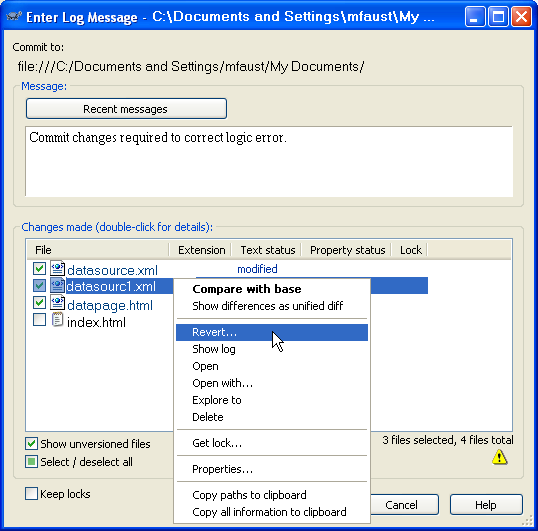
Figure 7: This dialog is displayed for committing a working copy.
This example illustrates the ease-of-use of this type of svn client. In addition to TortoiseSVN, there's also an open-source Eclipse plug-in for performing svn client tasks. This package, called Subclipse, extends the Eclipse interface used by WDSC by adding Subversion client capabilities to allow developers to check out source from a Subversion repository and commit source changes back to the repository when complete. This plug-in can be incorporated into your existing Eclipse workspace through the Help menu by accessing the Software Updates submenu and selecting the Find and Install option. From the wizard, select the Search For New Features To Install radio button and then click Next. From the dialog shown in Figure 8, select the New Remote Site button.
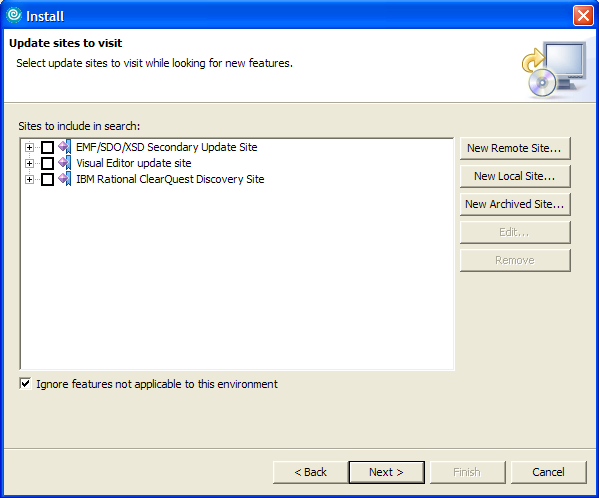
Figure 8: Use this dialog within Eclipse to install Subclipse.
The dialog presented will request a name and URL associated with the site containing the update. Enter the values shown here:
- Name: Subclipse
- URL: http://subclipse.tigris.org/update_1.0.x
After you accept the license term, the plug-in will be installed automatically. When the wizard completes, you'll be forced to restart Eclipse. At this point, you are ready to work with the Subclipse plug-in by going to the Window menu and selecting the Open Perspective submenu and then selecting Other. The dialog shown in Figure 9 is displayed.
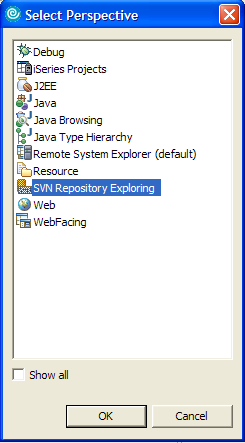
Figure 9: The Subclipse plug-in is now active.
Once you've selected SVN Repository Exploring, you'll have the ability to work with Subversion repositories from directly within the Eclipse workspace. This gives you one central location from which you can build your projects and handle version control.
Open Your Mind
If you haven't considered using an open-source solution for your change management needs, you really should. The options are endless and limitless. So open your mind to the open-source possibilities.
Mike Faust is Applications Support Manager for Invivo Corp in Orlando, Florida. Mike is also the author of the books The iSeries and AS/400 Programmer's Guide to Cool Things and Active Server Pages Primer and SQL Built-in Functions and Stored Procedures. You can contact Mike at


















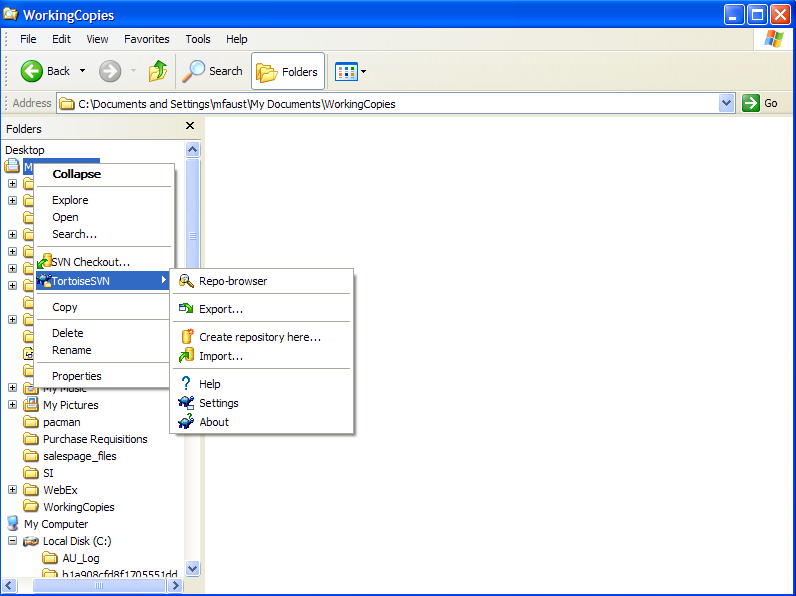








 More than ever, there is a demand for IT to deliver innovation. Your IBM i has been an essential part of your business operations for years. However, your organization may struggle to maintain the current system and implement new projects. The thousands of customers we've worked with and surveyed state that expectations regarding the digital footprint and vision of the company are not aligned with the current IT environment.
More than ever, there is a demand for IT to deliver innovation. Your IBM i has been an essential part of your business operations for years. However, your organization may struggle to maintain the current system and implement new projects. The thousands of customers we've worked with and surveyed state that expectations regarding the digital footprint and vision of the company are not aligned with the current IT environment. TRY the one package that solves all your document design and printing challenges on all your platforms. Produce bar code labels, electronic forms, ad hoc reports, and RFID tags – without programming! MarkMagic is the only document design and print solution that combines report writing, WYSIWYG label and forms design, and conditional printing in one integrated product. Make sure your data survives when catastrophe hits. Request your trial now! Request Now.
TRY the one package that solves all your document design and printing challenges on all your platforms. Produce bar code labels, electronic forms, ad hoc reports, and RFID tags – without programming! MarkMagic is the only document design and print solution that combines report writing, WYSIWYG label and forms design, and conditional printing in one integrated product. Make sure your data survives when catastrophe hits. Request your trial now! Request Now. Forms of ransomware has been around for over 30 years, and with more and more organizations suffering attacks each year, it continues to endure. What has made ransomware such a durable threat and what is the best way to combat it? In order to prevent ransomware, organizations must first understand how it works.
Forms of ransomware has been around for over 30 years, and with more and more organizations suffering attacks each year, it continues to endure. What has made ransomware such a durable threat and what is the best way to combat it? In order to prevent ransomware, organizations must first understand how it works. Disaster protection is vital to every business. Yet, it often consists of patched together procedures that are prone to error. From automatic backups to data encryption to media management, Robot automates the routine (yet often complex) tasks of iSeries backup and recovery, saving you time and money and making the process safer and more reliable. Automate your backups with the Robot Backup and Recovery Solution. Key features include:
Disaster protection is vital to every business. Yet, it often consists of patched together procedures that are prone to error. From automatic backups to data encryption to media management, Robot automates the routine (yet often complex) tasks of iSeries backup and recovery, saving you time and money and making the process safer and more reliable. Automate your backups with the Robot Backup and Recovery Solution. Key features include: Business users want new applications now. Market and regulatory pressures require faster application updates and delivery into production. Your IBM i developers may be approaching retirement, and you see no sure way to fill their positions with experienced developers. In addition, you may be caught between maintaining your existing applications and the uncertainty of moving to something new.
Business users want new applications now. Market and regulatory pressures require faster application updates and delivery into production. Your IBM i developers may be approaching retirement, and you see no sure way to fill their positions with experienced developers. In addition, you may be caught between maintaining your existing applications and the uncertainty of moving to something new. IT managers hoping to find new IBM i talent are discovering that the pool of experienced RPG programmers and operators or administrators with intimate knowledge of the operating system and the applications that run on it is small. This begs the question: How will you manage the platform that supports such a big part of your business? This guide offers strategies and software suggestions to help you plan IT staffing and resources and smooth the transition after your AS/400 talent retires. Read on to learn:
IT managers hoping to find new IBM i talent are discovering that the pool of experienced RPG programmers and operators or administrators with intimate knowledge of the operating system and the applications that run on it is small. This begs the question: How will you manage the platform that supports such a big part of your business? This guide offers strategies and software suggestions to help you plan IT staffing and resources and smooth the transition after your AS/400 talent retires. Read on to learn:
LATEST COMMENTS
MC Press Online